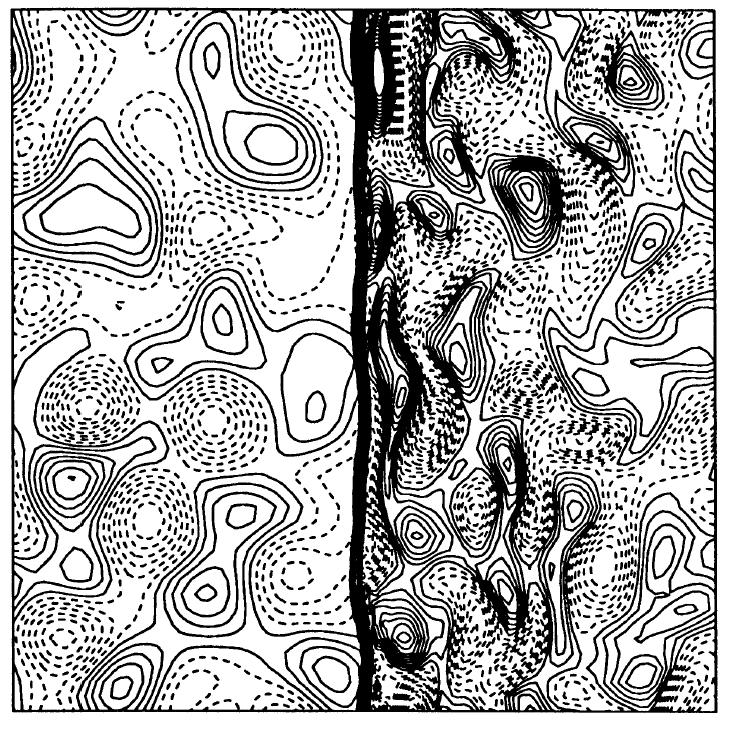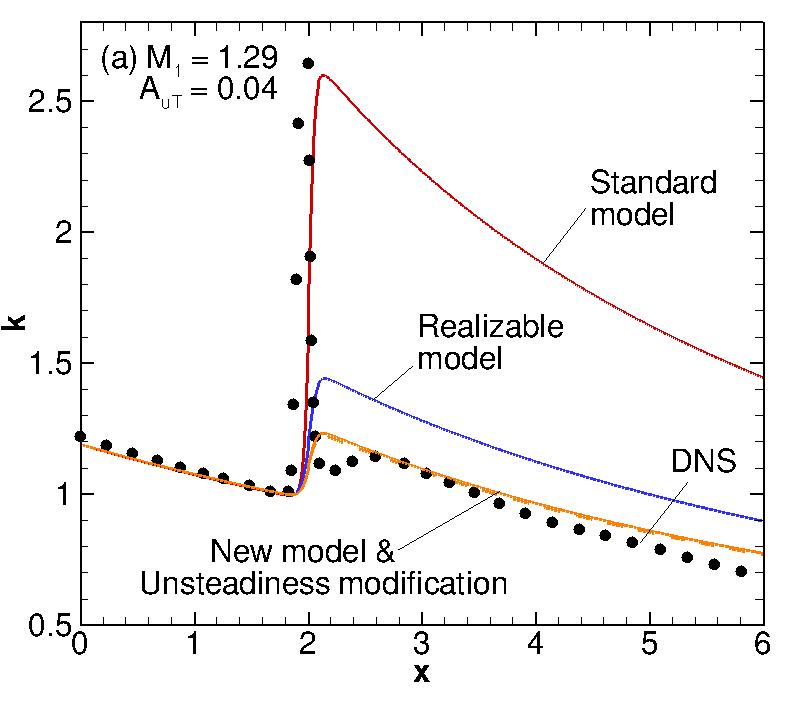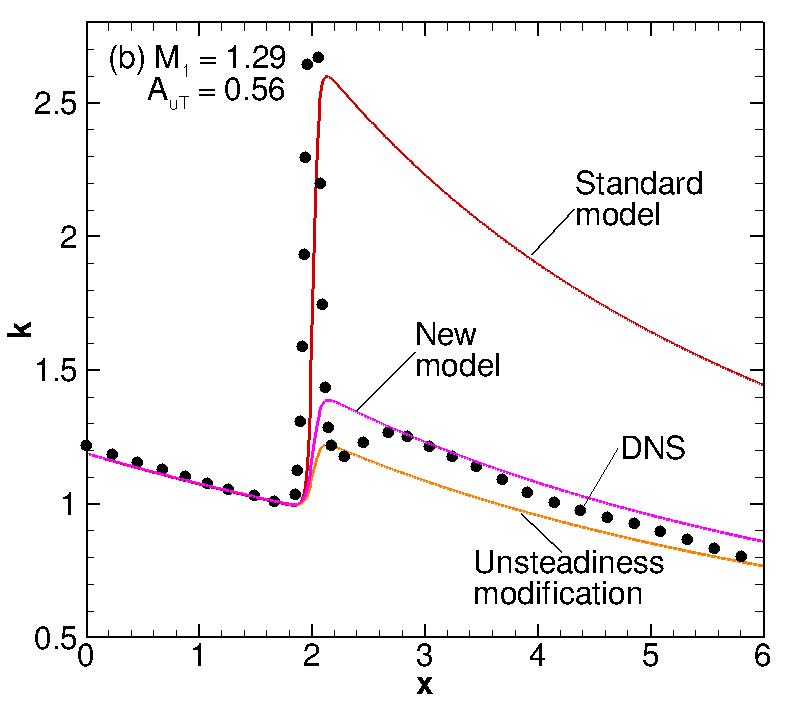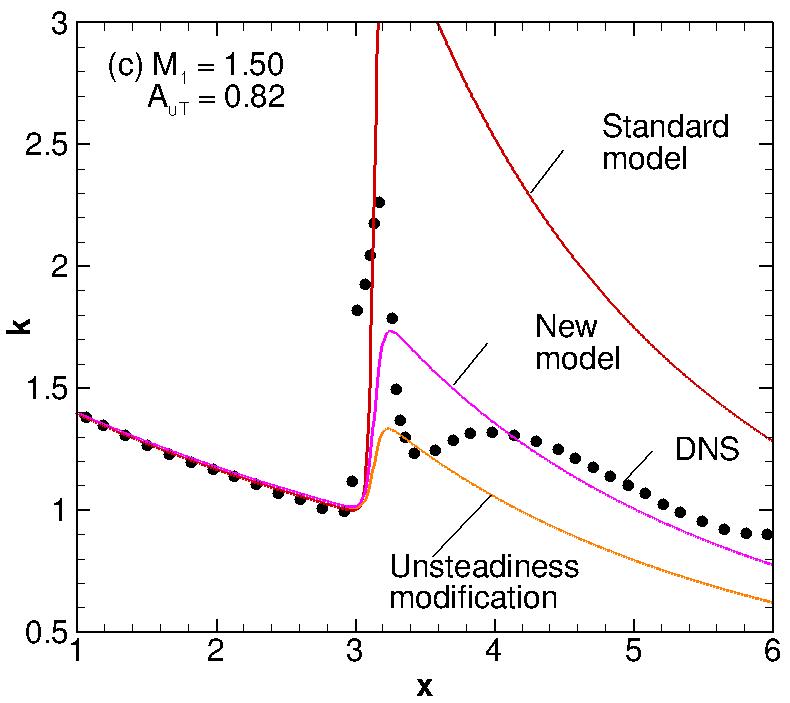Modeling the effect of upstream temperature fluctuations on shock/homogeneous turbulence interaction
Reynolds-averaged Navier-Stokes (RANS) equations can yield significant error when applied to the interaction of
turbulence with shock waves. This is often due to the fact that RANS turbulence models do not account for the underlying
physical phenomena correctly. For example, in the presence of appreciable temperature fluctuations in the upstream flow,
turbulence amplification across a shock is significantly affected by the magnitude of the temperature fluctuations, and the
sign of the upstream velocity-temperature correlation. Standard two-equation models with compressibility correction do not
reproduce this effect. We use the interaction of homogeneous isotropic turbulence with a normal shock to suggest
improvements to the k-epsilon model. The approach is similar to that presented in an earlier work. Linear inviscid analysis
is used to study the effect of upstream temperature fluctuations on the evolution of turbulent kinetic energy, $k$,
across the shock. The dominant mechanisms contributing to the $k$-amplification are identified and then modeled in a
physically consistent way. The dissipation rate equation is also altered based on linear analysis results. The
modifications yield significant improvement over existing two-equation models and the new model predictions are found to
match linear theory and direct numerical simulation data well.
Ref: Veera, V.K. and Sinha, K., "Modeling the effect of upstream temperature fluctuations on shock/homogeneous
turbulence interaction,” Phys. Fluids, Vol. 21, 2009. .

Homogeneous isotropic turbulence passing through a normal shock.
Representative results:



Amplification of turbulent kinetic energy across a normal shock at for different levels of upstream temperature fluctuations.

